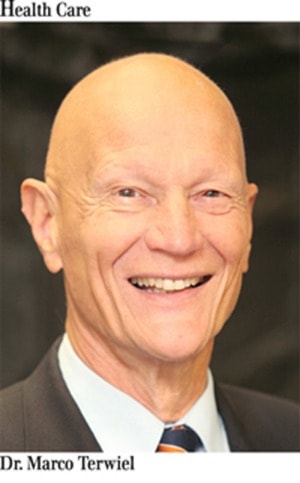I last described in a much abbreviated form how this Dutch-trained practitioner came to be a family physician in Maple Ridge. When I arrived in 1968, there were only 11 general practitioners serving a population of approximately 20,000 people, and all but one were Canadian-trained. There were also four visiting specialists, but they all lived and worked mainly in Vancouver and New Westminster. Now 43 years later, there are 72 general practitioners/family physicians and 29 of these received their training in another country, and of the 41 specialists, about half are also trained abroad. Add to that 13 general practitioners/family physicians in Pitt Meadows and six of these are also trained abroad. I cannot think of any other professions or occupations (other than seasonal farm workers) where there is such a large percentage of foreign-trained members. The main reason for this is that for too many years Canadian universities failed to train a sufficient number of medical doctors to serve the population. Until recently, the University of B.C. – our only medical school – graduated 120 new doctors annually, and that was insufficient to replace even half of the number of doctors who retire every year in B.C. Therefore, our province had to import hundreds of physicians from other parts of Canada or abroad to meet the demand for medical services. The current government has doubled the number of medical students, but even that is insufficient to provide every British Columbian with a family doctor in the foreseeable future. With the introduction of the Canada Health Act in 1984, both the federal and provincial governments took on the full responsibility of paying for all medically needed services. Human nature being what it is, when something worthwhile is suddenly “free”, the demand soared. And with that greatly increased utilization, the cost of paying for hospital and physician services with tax dollars went out of control. The government panicked and commissioned two left-wing health care economists from UBC ( Barer & Stoddard) to come up with recommendations on how to rein in the cost of health care. One of the key recommendations was that since every physician generated – not earned – in excess of a quarter of one million dollars in health care costs, one simply should reduce the number of physicians and the burden on the taxpayer would be reduced. Politicians liked the idea and reduced the enrollment of the Canadian medical schools by 10 per cent, ignoring the fact that universities were not turning out a sufficient number to begin with. Government officials, while repeating the mantra that Canada has the best health care system in the world, also ignored the fact that an increasing population does not stop getting heart attacks, breaking arms or legs, develop diabetes, get pneumonia and many other ailments that need urgent medical attention. And for those problems, you just happen to need well-trained physicians, and even today some politicians do not appear to know that it takes 10 or more years to produce the next generation of doctors. One other recommendation was to reduce the number of hospital beds. The government implemented that vigorously and that had a major impact, controlling costs somewhat, but increasing the wait lists to intolerable levels. In 1968, Ridge Meadows Hospital had 105 acute care hospital beds. That number went down to 88 while the population quadrupled. Despite these ill-considered measures, the cost of health care kept going up, waits became longer and Canada now ranks 26th among 28 developed nations with universal access to health care when one considers physician supply. In recent years, the number of physicians being trained in Canada has increased markedly, rising from a little more than 1,500 in 2002 to nearly 2,500 last year. But that number is still not sufficient to maintain the physician-to-population ratio at its current level, leave alone improve it. The future looks more worrisome, yet, since nearly 40 per cent of physicians are 55 years or older and, thus, many will retire in foreseeable future. Furthermore, female physicians make up an increasingly larger percentage of the workforce, and even though they make excellent physicians, studies show clearly that, on average, female doctors tend to provide fewer services per week to patients and work fewer hours than their male counterparts. Combine that with an aging population that will require more medical services and it is clear that in coming years, our country will have to rely on many more foreign trained physicians.
Dr. Marco Terwiel is a retired family physician who lives in Maple Ridge.
